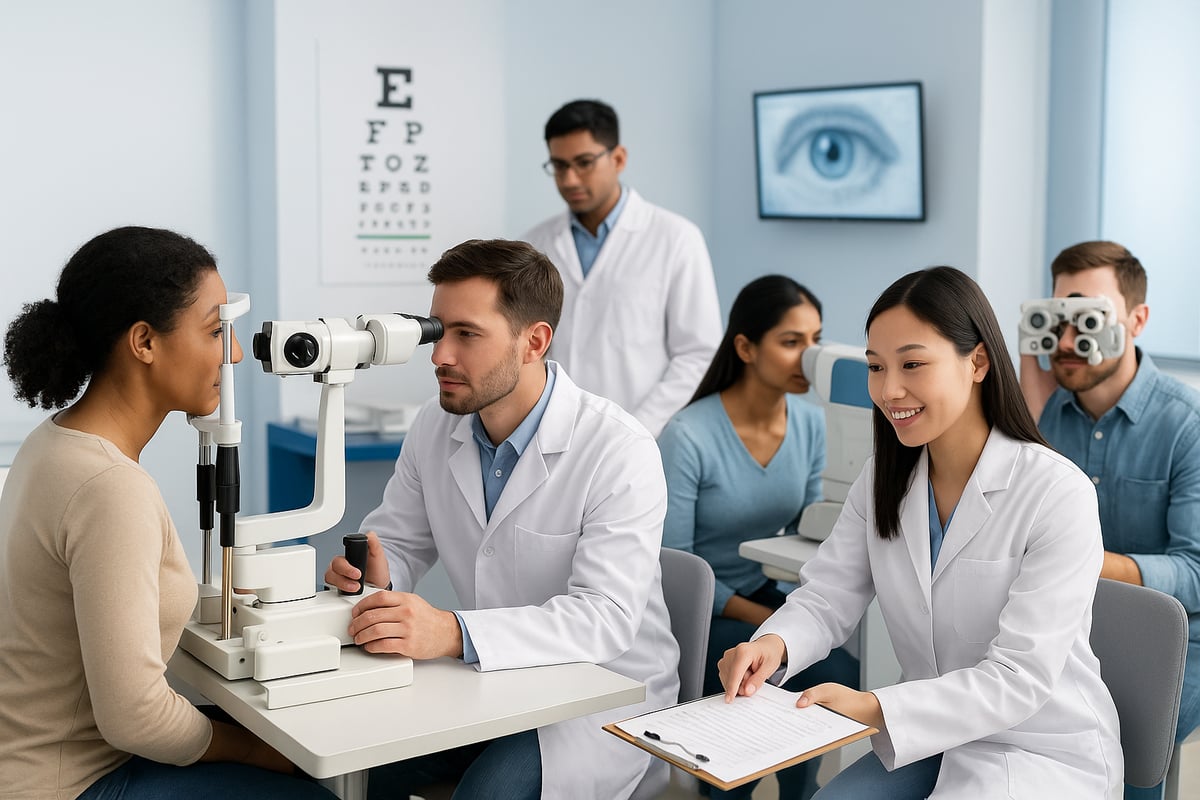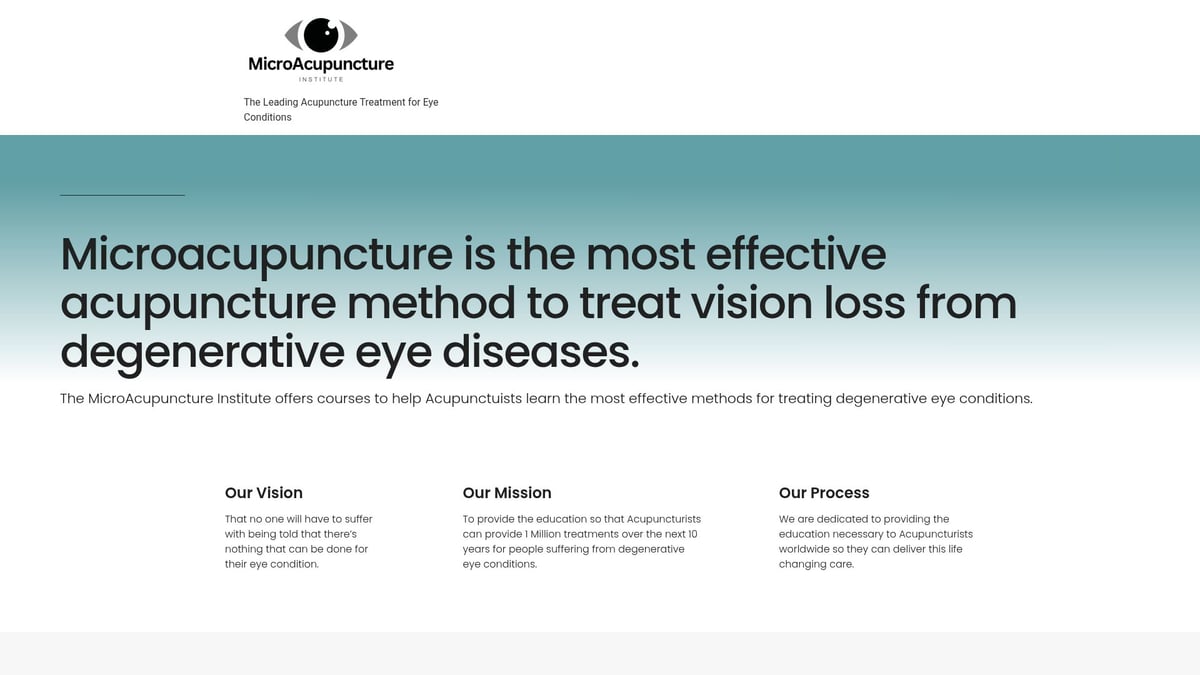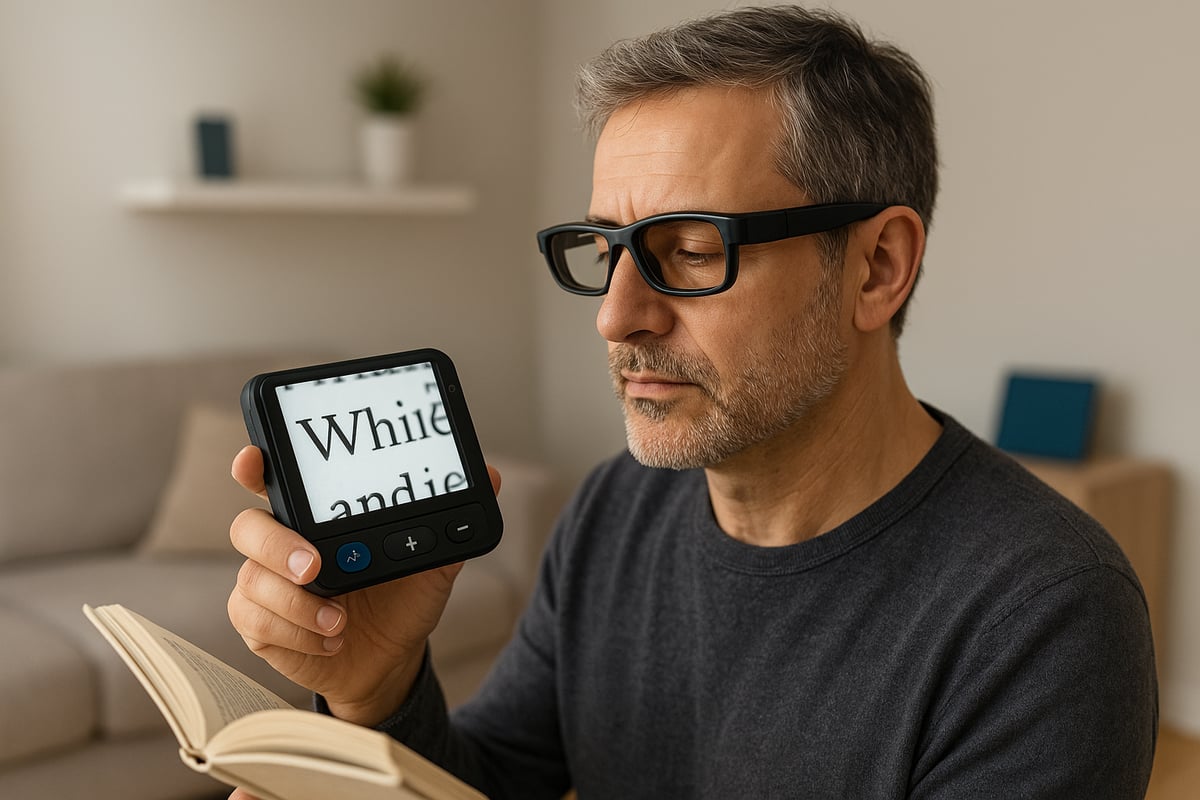Imagine a future where eye deficiencies no longer dictate the way people live. In 2025, new research and technologies offer hope to millions at risk of vision loss. This guide explores the causes, signs, diagnosis, and advanced treatments for eye deficiencies. Readers will find the latest data, expert advice, and practical steps to protect vision. Learn which conditions are most common, what new diagnostic tools can do, and how emerging therapies are changing lives. Take charge of your eye health with the knowledge and strategies shared here.
Understanding Eye Deficiencies: Types, Causes, and Prevalence
Eye deficiencies are conditions that impair how the eyes function or process visual information. These may include refractive errors, degenerative diseases, and inherited disorders. Some eye deficiencies are temporary, such as those caused by injury or infection, while others are permanent and progressive. Understanding the wide range of eye deficiencies is key to recognizing their impact on daily life and health.

Defining Eye Deficiencies
Eye deficiencies encompass a broad spectrum of visual problems. These include:
- Refractive errors such as nearsightedness and farsightedness
- Degenerative eye diseases like age-related macular degeneration (AMD)
- Inherited conditions such as retinitis pigmentosa
Temporary eye deficiencies can result from infections or trauma, often resolving with treatment. Permanent deficiencies, however, may gradually worsen and require ongoing care. Recognizing the difference between these types is crucial for effective management of eye deficiencies.
Common Types and Their Causes
The most common eye deficiencies include:
- Myopia (nearsightedness)
- Hyperopia (farsightedness)
- Astigmatism
- Presbyopia
- Macular degeneration
- Glaucoma
- Cataracts
- Diabetic retinopathy
- Retinitis pigmentosa
Causes range from genetics to environmental factors. Children are increasingly affected by myopia, with the World Health Organization projecting that 50 percent of the global population will have myopia by 2050. Age, lifestyle choices, and chronic conditions like diabetes also contribute. To learn more about the underlying factors, see the Causes of Vision Deterioration.
Global Prevalence and Demographic Trends
Eye deficiencies affect individuals worldwide, with prevalence influenced by age, region, and gender. Recent 2025 data show that older adults experience higher rates of vision loss, especially in regions with aging populations. Increased use of digital devices has contributed to rising cases among younger demographics as well.
According to the CDC, millions in the United States have some form of vision impairment. The World Health Organization has highlighted growing disparities in access to basic eye care, emphasizing the need for global action on eye deficiencies.
Risk Factors and Early Warning Signs
Key risk factors for developing eye deficiencies include:
- Family history of vision problems
- Chronic illnesses such as diabetes or hypertension
- Smoking and prolonged UV exposure
Early warning signs may present as:
- Blurred or double vision
- Halos around lights
- Night blindness
- Loss of peripheral vision
Prompt recognition of these symptoms can lead to earlier intervention and help slow the progression of eye deficiencies.
Societal and Economic Impact
The societal burden of eye deficiencies is substantial. Direct medical costs, productivity losses, and support needs place pressure on individuals and communities. The International Agency for the Prevention of Blindness estimated that global vision impairment cost $410 billion in 2023.
Quality of life can be deeply affected, with vision loss impacting independence, mental health, and daily activities. Addressing eye deficiencies is not just a medical concern but a societal priority.
Advanced Diagnostics and Screening in 2025
Staying ahead of eye deficiencies in 2025 means leveraging the most advanced diagnostic and screening methods available. With the rapid evolution of technology, early detection is more accessible and accurate than ever, offering hope for millions at risk.

Innovations in Eye Health Assessment
The landscape of diagnosing eye deficiencies has transformed with new technologies. Optical coherence tomography (OCT) now provides high-resolution, cross-sectional images of the retina, allowing specialists to detect minute changes before vision loss occurs. Fundus photography captures detailed images of the back of the eye, revealing early signs of diseases.
Artificial intelligence and machine learning are revolutionizing screenings by analyzing vast datasets and identifying patterns that humans might miss. For example, AI systems can flag diabetic retinopathy with remarkable accuracy, enabling faster, more reliable detection. Genetic screening is also emerging as a valuable tool for predicting inherited eye deficiencies, helping families understand their risks.
Screening Guidelines and Recommendations
Updated recommendations emphasize the importance of regular eye exams for all ages. Children should have comprehensive screenings before starting school and periodically throughout their development. Adults are advised to undergo eye checks every two years, while individuals over 40 should schedule annual exams due to increased risk of age-related eye deficiencies.
Even those without symptoms benefit from proactive screenings, as many eye deficiencies develop silently. The American Optometric Association highlights the value of early and routine exams for preserving long-term vision. Early detection allows for timely intervention and can significantly reduce the risk of irreversible damage.
Telemedicine and Remote Monitoring
Teleophthalmology is expanding access to diagnostic services, especially for rural or underserved communities. Remote vision testing and home-based monitoring apps make it easier for patients to track their eye health without frequent clinic visits. Usage of telemedicine eye exams has surged in recent years, reflecting a shift toward digital healthcare.
These innovations break down geographical barriers and empower patients to participate in their own care. By integrating remote diagnostics, healthcare systems can reach more people at risk of eye deficiencies, providing timely advice and referrals when problems are detected.
Barriers to Early Diagnosis
Despite technological advances, significant obstacles remain. Many individuals face insurance limitations, lack of awareness, or reside too far from specialized clinics. These barriers can delay the identification of eye deficiencies, increasing the risk of vision loss.
Solutions include deploying mobile eye clinics to remote regions and launching targeted public health campaigns to increase awareness. Improving insurance coverage and expanding educational resources are also essential steps toward reducing disparities in eye care access.
Case Example: Early Detection Success Stories
Real-world outcomes demonstrate the power of early diagnosis. For instance, individuals identified with glaucoma at an early stage often maintain their vision with timely treatment. As highlighted by CDC vision loss statistics, early intervention directly correlates with better quality of life and reduced financial burden.
These stories reinforce the value of regular screening for eye deficiencies. They show that with advanced diagnostics and prompt care, it is possible to prevent severe vision loss and preserve independence.
Treatment Options: From Conventional to Cutting-Edge
Choosing the right treatment for eye deficiencies can feel overwhelming, especially with the rapid advances in 2025. Today’s patients have more options than ever, from classic solutions to pioneering therapies. Understanding these choices empowers you to work with your eye care team for optimal results.
Traditional Medical and Surgical Treatments
For many eye deficiencies, time-tested treatments remain the first line of defense. Eyeglasses and contact lenses continue to offer reliable vision correction for refractive errors like myopia, hyperopia, and astigmatism.
Surgical options have evolved significantly. Procedures such as LASIK and PRK reshape the cornea to reduce reliance on corrective lenses. Cataract surgery, involving removal of the clouded lens and implantation of an artificial one, restores vision for millions each year.
Medications play a vital role, especially for chronic conditions. For glaucoma, prescription eye drops lower intraocular pressure to slow progression. In macular degeneration, anti-VEGF injections help preserve central vision. While these approaches are effective, they may not halt all forms of vision loss, especially in advanced stages of eye deficiencies.
Emerging Therapies and Technologies
Recent years have seen a surge in groundbreaking therapies for eye deficiencies, particularly those caused by degenerative diseases. Gene therapy is transforming the outlook for inherited retinal disorders. FDA-approved treatments, like Luxturna for Leber’s congenital amaurosis, target the underlying genetic cause, offering hope where none existed before.
Stem cell therapy is under active investigation for retinal regeneration, with clinical trials showing promising early results. Retinal implants and bionic eyes, such as the Argus II prosthesis, provide functional vision to some individuals with severe vision loss.
For a deeper dive into conditions driving these innovations, see the Degenerative Eye Diseases Overview. These advanced therapies are often tailored to the specific type and cause of eye deficiencies, making a precise diagnosis essential.
Lifestyle and Nutritional Interventions
Lifestyle choices have a measurable impact on the progression and management of eye deficiencies. Diets rich in antioxidants like lutein, zeaxanthin, and vitamin A support retinal health and may slow degenerative changes. Omega-3 fatty acids, found in fish and some plant sources, contribute to overall eye wellness.
The Age-Related Eye Disease Study 2 (AREDS2) showed that specific nutritional supplements can reduce the risk of advanced macular degeneration by 25 percent.
Other essential lifestyle interventions include quitting smoking, wearing UV-protective eyewear, and maintaining regular physical activity. These practical steps, combined with routine eye exams, form the cornerstone of prevention and management for many eye deficiencies.
Integrative and Complementary Approaches
Beyond conventional medicine, integrative strategies are gaining attention in the care of eye deficiencies. Low vision rehabilitation helps individuals adapt to vision changes, offering training in assistive devices and adaptive technologies.
Vision therapy, a structured program of visual activities, is sometimes recommended for specific focusing or coordination problems. Adaptive technologies, such as magnifiers and screen readers, empower people with vision loss to stay independent.
Some patients explore complementary therapies like acupuncture, herbal supplements, or mindfulness practices. Evidence for these approaches varies, so it is critical to consult with qualified professionals and consider them as adjuncts, not replacements, for evidence-based treatments of eye deficiencies.
MicroAcupuncture Institute: Alternative Solutions for Degenerative Eye Conditions
MicroAcupuncture is an emerging option for those seeking alternative solutions for degenerative eye conditions. This method involves stimulating specific points around the eyes to improve blood flow and potentially reactivate dormant retinal cells.

Practitioners report benefits for conditions such as macular degeneration, retinitis pigmentosa, and glaucoma. Global training programs ensure high standards of care, and patients can access a growing network of certified providers.
While clinical research is ongoing, many individuals with eye deficiencies report improved visual function and quality of life following MicroAcupuncture treatments. Suitability depends on the specific diagnosis, disease stage, and overall health, so a thorough assessment is recommended before beginning therapy.
Personalized Treatment Planning
No two cases of eye deficiencies are alike, highlighting the importance of individualized care. Treatment plans should consider genetic factors, lifestyle habits, and coexisting health conditions.
Shared decision-making between patient and provider ensures that therapies align with both clinical needs and personal preferences. For some, combining conventional and alternative treatments leads to the best outcomes.
Regular follow-up and adjustment of the treatment plan are key. As new therapies emerge, staying informed allows patients to take advantage of the latest advances in eye deficiencies care.
Living with Eye Deficiencies: Daily Strategies and Support
Living with eye deficiencies brings unique challenges, but with the right strategies and resources, individuals can lead fulfilling lives. Practical adaptation, emotional support, and strong advocacy are crucial for managing daily life and maximizing independence.

Adapting to Vision Changes
Adjusting to vision changes caused by eye deficiencies often begins at home. Simple modifications like increasing lighting, using contrasting colors for household items, and decluttering can significantly improve navigation and safety.
Assistive devices play a vital role. Many people benefit from magnifiers, large-print materials, and talking clocks. Advanced technologies, such as screen readers and smart glasses, empower users to read, navigate, and communicate more independently.
For those seeking further guidance, Eye Care and Prevention Tips offers practical advice on daily adaptations and preventive measures. Embracing these strategies helps maintain autonomy and reduces frustration when coping with eye deficiencies.
Mental Health and Emotional Wellbeing
Eye deficiencies do not only impact physical ability but also emotional health. Individuals may experience anxiety, depression, or social withdrawal after diagnosis or as vision changes progress.
Accessing mental health resources is vital. Counseling, peer support groups, and vision rehabilitation services can provide coping mechanisms and reassurance. According to the National Eye Institute, up to 30 percent of those with vision loss face clinical depression, underscoring the importance of timely support.
Staying engaged with friends, family, and community activities helps counter isolation. Addressing the emotional aspects of eye deficiencies is as important as managing physical symptoms.
Workplace and Educational Accommodations
For people with eye deficiencies, thriving at work or school is possible with the right accommodations. Legal protections such as the Americans with Disabilities Act (ADA) and Section 504 in the United States ensure access to reasonable adjustments.
Effective tools include Braille materials, large-print documents, text-to-speech software, and adaptive computer programs. Many universities now offer specialized programs and resources for visually impaired students, promoting academic success.
Globally, millions still lack access to basic vision correction. The WHO report on global eyeglasses access highlights the urgent need for equitable solutions, especially in education and employment environments.
Navigating Healthcare and Advocacy
Managing eye deficiencies requires proactive healthcare navigation. Open communication with eye care teams ensures individualized treatment plans and timely interventions.
Patient advocacy groups, such as Prevent Blindness and Foundation Fighting Blindness, offer education, support, and opportunities to participate in clinical research. Being informed and involved empowers individuals to make choices that align with their goals.
By advocating for themselves and connecting with resources, people living with eye deficiencies can shape their care and future.
Prevention and Future Outlook: Protecting Vision in 2025 and Beyond
Maintaining healthy vision in 2025 requires a proactive approach. As research advances, prevention strategies and future innovations offer hope for those facing eye deficiencies. Understanding what you can do today—and what is possible tomorrow—empowers you to protect your sight for a lifetime.
Preventive Eye Care Strategies
Prevention remains the cornerstone of managing eye deficiencies. Regular eye exams can catch problems early, even before symptoms appear. Public health campaigns now bring screenings into schools and workplaces, making early detection accessible.
- Annual check-ups for adults over 40
- Vision screenings in children and teens
- Blue light awareness for digital device users
Lifestyle choices also play a role. Wearing sunglasses, eating a nutrient-rich diet, and avoiding smoking are all proven ways to reduce risk. Taking these steps helps control the impact of eye deficiencies before they become severe.
Advances in Genetic and Regenerative Medicine
The future of treating eye deficiencies is being shaped by breakthroughs in genetics and regenerative science. Techniques like CRISPR gene editing target inherited retinal diseases, while stem cell therapy aims to restore damaged tissue.
Recent partnerships, such as Eli Lilly’s gene therapy partnership, are accelerating the development of new therapies. Ongoing clinical trials offer promise for conditions like retinitis pigmentosa and macular degeneration. These innovations may soon redefine what is possible for people living with eye deficiencies.
Predictive Analytics and Personalized Risk Assessment
Artificial intelligence is transforming how we predict and manage eye deficiencies. AI models now analyze genetic, lifestyle, and imaging data to identify risk factors before symptoms arise.
For example, the Fundus2Globe AI-driven myopia management platform uses advanced algorithms to create personalized care plans based on 3D eye modeling. Wearable technology and mobile apps allow for continuous ocular health monitoring. This approach makes it easier to intervene early and tailor prevention to each individual.
Global Efforts to Reduce Vision Impairment
Worldwide, organizations are joining forces to address the growing challenge of eye deficiencies. The World Health Organization's Universal Eye Health plan aims to reduce avoidable blindness by 2030.
Success stories from low and middle income countries highlight the impact of mobile clinics and telemedicine. International collaborations ensure that new treatments and diagnostics reach underserved communities. These global efforts are closing the gap in eye care access.
Expert Predictions for the Next Decade
Leading ophthalmologists predict that care for eye deficiencies will become even more personalized. Expect telehealth, AI-driven diagnostics, and gene therapies to become routine. Experts also anticipate that public awareness will grow, encouraging more people to seek early intervention.
Advancements in digital health, wearable devices, and big data analytics will help identify at-risk individuals sooner. The next decade promises a future where vision loss is less common and more manageable.
Steps to Take Today for Lifelong Vision Health
Proactive habits can make a big difference in preventing eye deficiencies. Use this checklist to protect your vision:
| Action | Benefit |
|---|---|
| Schedule regular eye exams | Early detection |
| Eat a balanced, eye-healthy diet | Supports ocular health |
| Wear UV-protective sunglasses | Prevents sun-related damage |
| Limit screen time and rest eyes | Reduces digital strain |
| Avoid smoking | Lowers risk of degeneration |
Stay informed about new treatments and participate in screenings. Taking these steps today ensures that you are prepared for advances in eye care tomorrow.
As you’ve seen throughout this guide, understanding your options and staying proactive can truly shape the future of your vision health. If you or someone you care about is living with a degenerative eye condition like macular degeneration, retinitis pigmentosa, or glaucoma, you don’t have to face it alone in 2025. We’re here to help you explore innovative approaches—like microacupuncture—to regain lost vision and improve your quality of life. Let’s talk about your unique situation and the possibilities ahead. You can Schedule A Free Phone Call to start the conversation and get expert guidance tailored to your needs.
